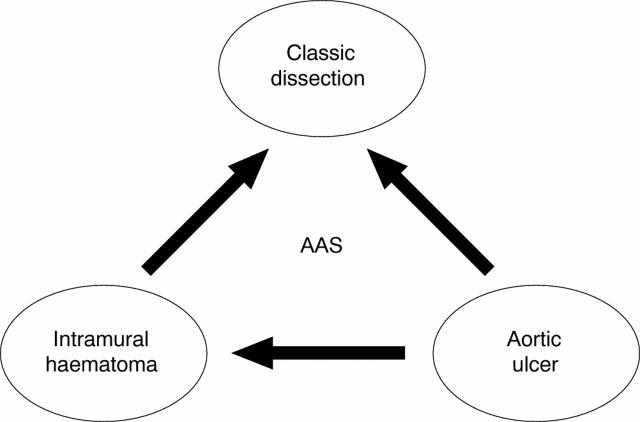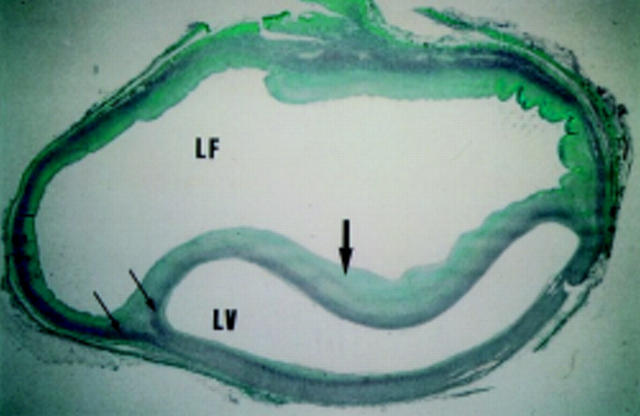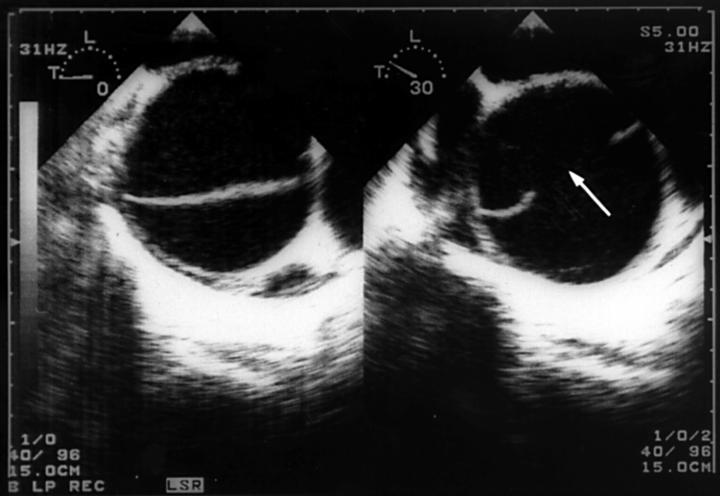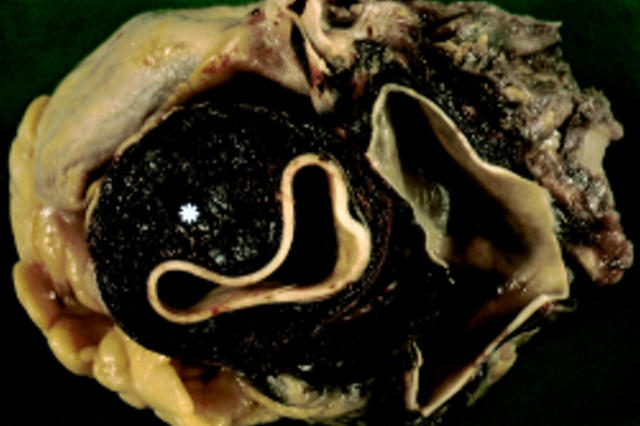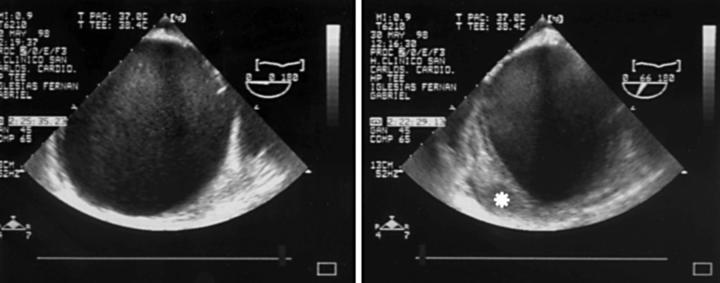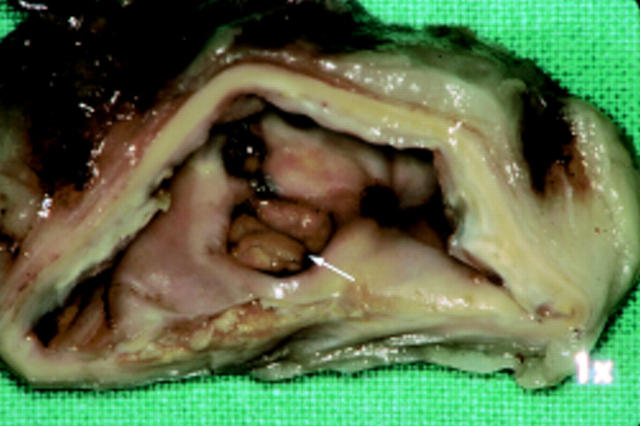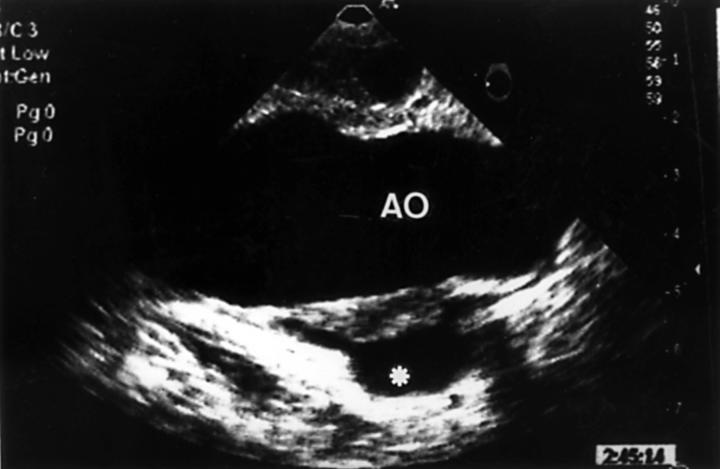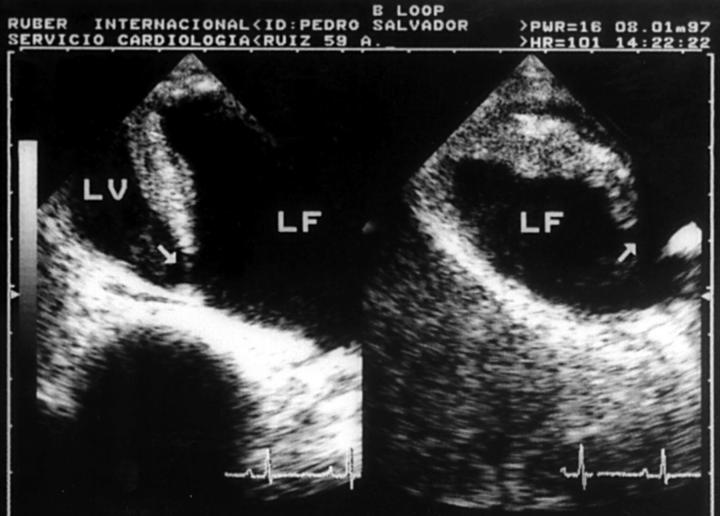Full Text
The Full Text of this article is available as a PDF (197.7 KB).
Figure 1 .
Acute aortic syndrome (AAS). Arrows indicate the possible progression of each of these aortic lesions.
Figure 2 .
Histological section (Mason's technique) from a patient with aortic dissection. Muscle is stained in red and collagen in green. The aortic media (stained in red) is partitioned in two (arrows); one forms part of the dissection flap, the other forms the outer wall of the false channel. Large arrow indicates the dissection flap. LF, false lumen; LV, true lumen.
Figure 3 .
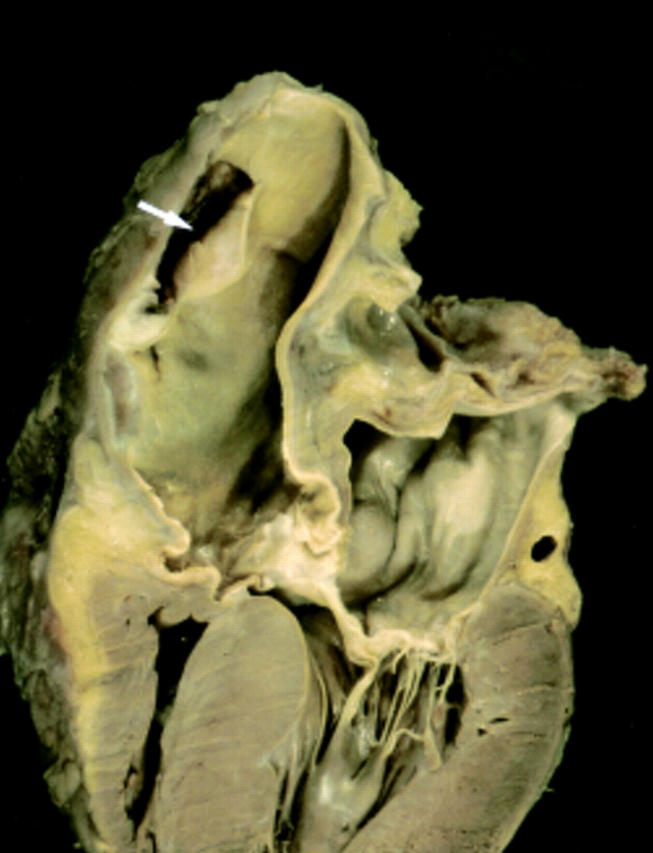
Anatomic specimen from a patient with type A aortic dissection. The entrance tear in the ascending aorta is clearly visible (arrow).
Figure 4 .
Transoesophageal echocardiographic study illustrating the double channel aorta and dissection flap (left panel), and the entrance tear (arrow) in the ascending aorta (right panel). Transversal planes.
Figure 5 .
Anatomical cross section of the descending thoracic aorta. The ostium of an intercostal artery sectioned by the dissecting haematoma is clearly visible. A small hole in the dissection flap will permit blood flow between false and true aortic lumens.
Figure 6 .
Anatomical cross section of the ascending aorta. An intramural aortic haematoma can be observed (asterisk).
Figure 7 .
Transoesophageal echocardiographic study of a patient with a dilated aorta (left panel) and a crescent shaped thickening (asterisk) of the anterolateral wall of the aortic root that corresponds to an aortic intramural haematoma. Transverse planes.
Figure 8 .
Histological section (Mason's technique) of a patient with intramural haematoma. Splitting of the aortic media by a haematoma (asterisk) is well documented.
Figure 9 .
Anatomical cross section of the descending thoracic aorta. A penetrating atherosclerotic aortic ulcer is indicated by an arrow.
Figure 10 .
Transoesophageal echocardiographic study of a patient with an aortic ulcer (asterisk) in the descending thoracic aorta (AO). Longitudinal plane.
Figure 11 .
Transoesophageal echocardiographic scans in a patient with a limited acute aortic dissection secondary to aortic ulceration. A thick, calcified, irregular flap can be seen. Longitudinal planes. Arrow, entrance tear, LF, false lumen, LV, true lumen.



